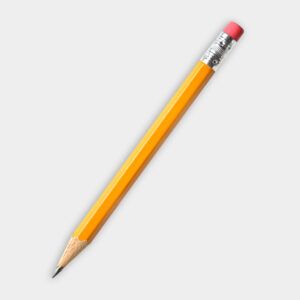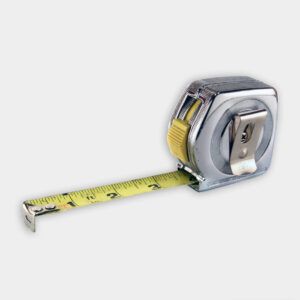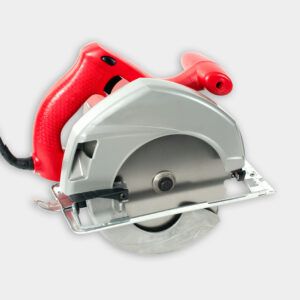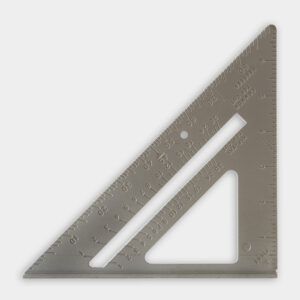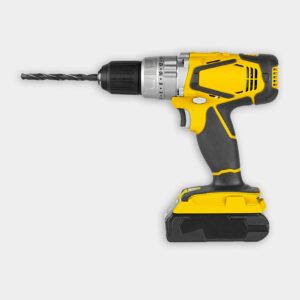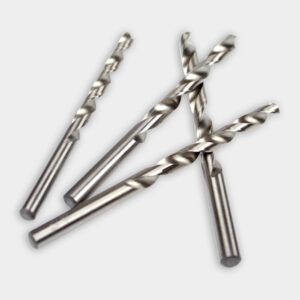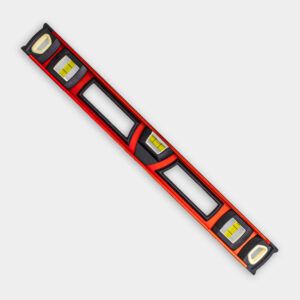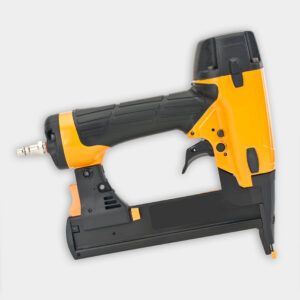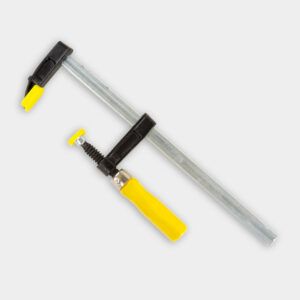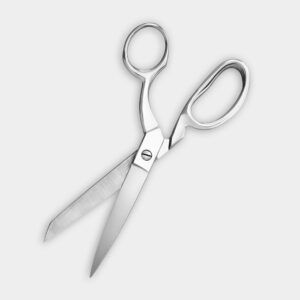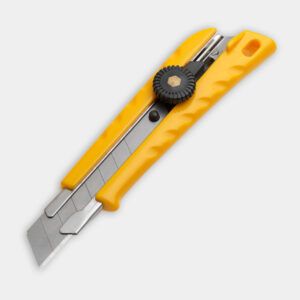A self-watering planter can be a great solution for gardeners who want to make sure their plants stay moist, even during busy times or vacations. This DIY project combines the benefits of a raised garden bed with a clever watering system, making it perfect for both novice and experienced gardeners.
In the video above, we show you how to build one. In the guide below, we walk you through the process of building your own self-watering planter step by step, from gathering materials to planting your favorite vegetables or flowers.
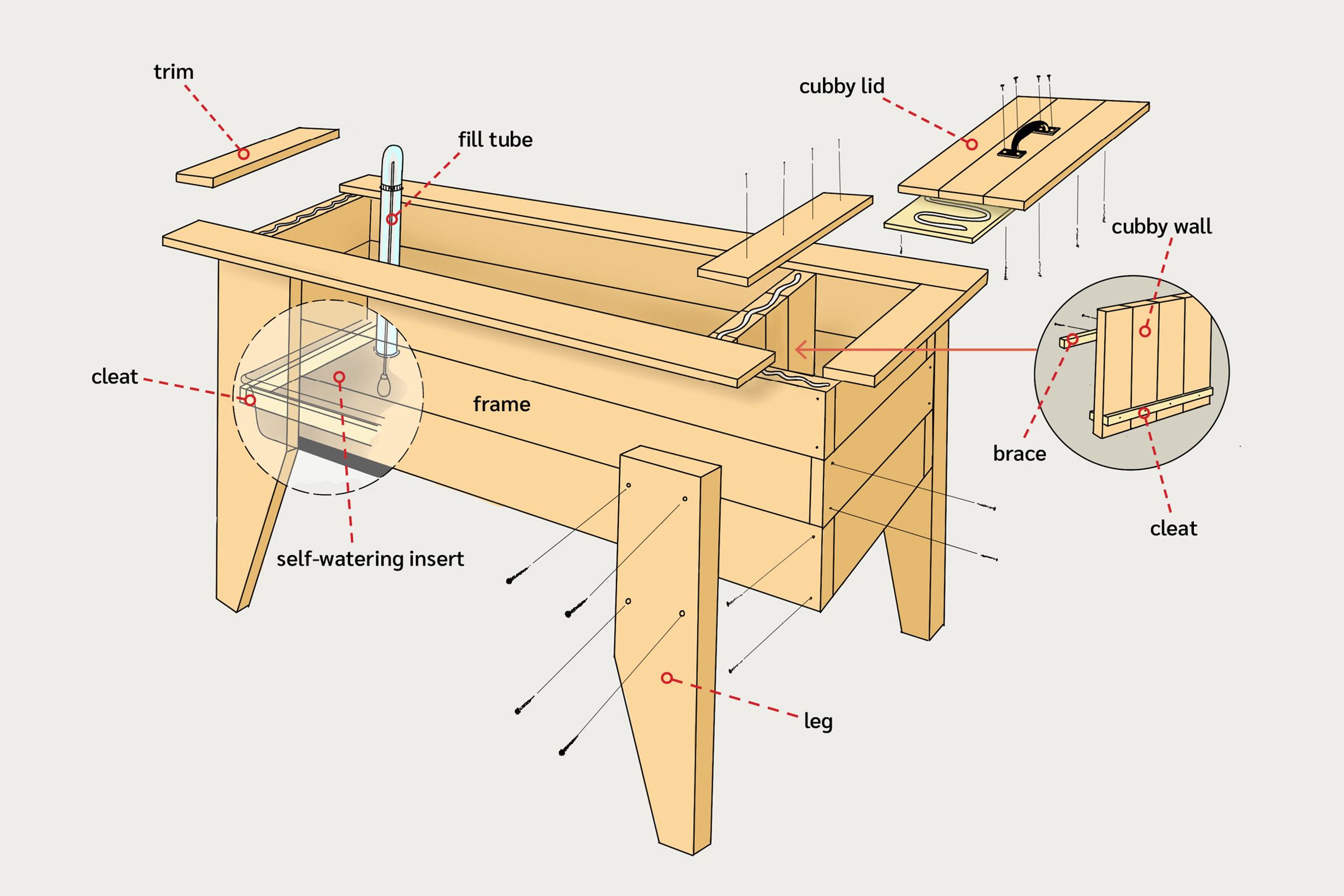
For a list of tools, materials, and the cut list for this project, scroll to the bottom of this page.
Steps for Building a Self-Watering Planter
Our design features a handsome, sturdy raised garden bed with inserts, providing 44×22 inches of garden space with a generous 14-inch depth. This depth supports everything from shallow-rooted leafy greens to tomatoes that need room to stretch their roots. The fill tube is discreetly tucked into a corner for easy access, and a built-in storage cubby keeps gardening essentials close at hand.
The tapered, furniture-like legs help anchor the planter in various locations, such as a patio, deck, or driveway end, allowing you to garden wherever sunlight is most abundant. The planter is designed to be about 30 inches tall, which is a comfortable working height. But you can adjust that based on what you want to grow. For instance, if you don’t plan on growing tall vines, like tomatoes, you could add longer legs to make it easier to tend shorter veggies.
Step 1: Build the Box
The planter is essentially three 2×6 cedar frames stacked on one another. Using the cut list below as a guide, trim all the boards to the proper lengths with a circular saw and rafter square. Two of the frames will have the same measurements, while the other one will have slightly longer sides. When you stack them, alternate the butt-jointed ends.
To assemble the frame, add pilot holes to the 2×6 boards cut to length to avoid splitting the cedar. Drill through the sides of the boards into the end grain of the mating board to make the butt joint.
Squeeze out exterior-grade wood glue (or construction adhesive) onto one side of the joint before fastening with 3 1/2-inch long outdoor-rated screws designed to work with cedar. Repeat the process until you’ve assembled all three frames.
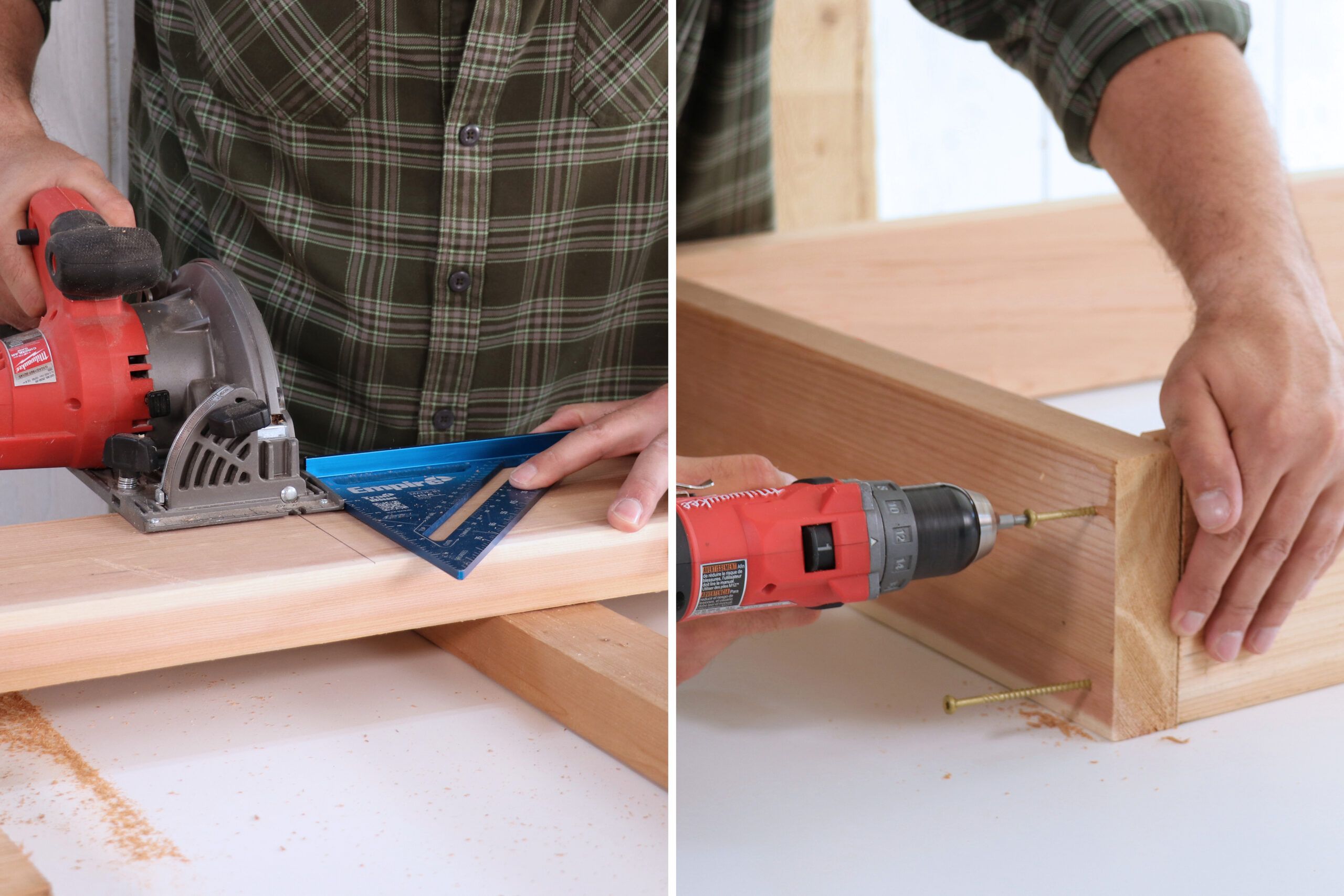
Step 2: Add the Cleats
The 1x2s screwed to the inside of the lowest frame will act as cleats, supporting the self-watering inserts. To mark the cleat locations, remove the top two frames, and set the lower one on spacer blocks at least 2 inches tall. This allows for easy access to the drain plugs later on. Then:
- With one self-watering planter inserted into the frame, use a level to transfer its top edge onto the inside of the 2×6, and strike a line.
- Next, set a combination square to 3/4 inch below that line, which represents the location of the cleat’s top, and transfer that line around the frame.
- Add the second insert into the frame and push it against the first one. Now use a speed square to mark vertically where the insert ends on the inside of the frame. The box will be longer than the combined length of the self-watering inserts, leaving room for the storage cubby.
- To find the length of the long cleats, trim a 1×2 board so it fits within the frame. Rest it on top of the inserts, with one end tight into the corner.
- Transfer the vertical mark you made earlier on the 2×6 onto the cleat. Trim the cleat to fit with the circular saw, then use it as a template to mark the second long cleat.
- Drill pilot holes, add glue, and then attach these two cleats to the frame using the layout lines you made earlier using 1 3/4-inch screws. Measure between these two cleats for the length of the short one for the end, and install it the same way.
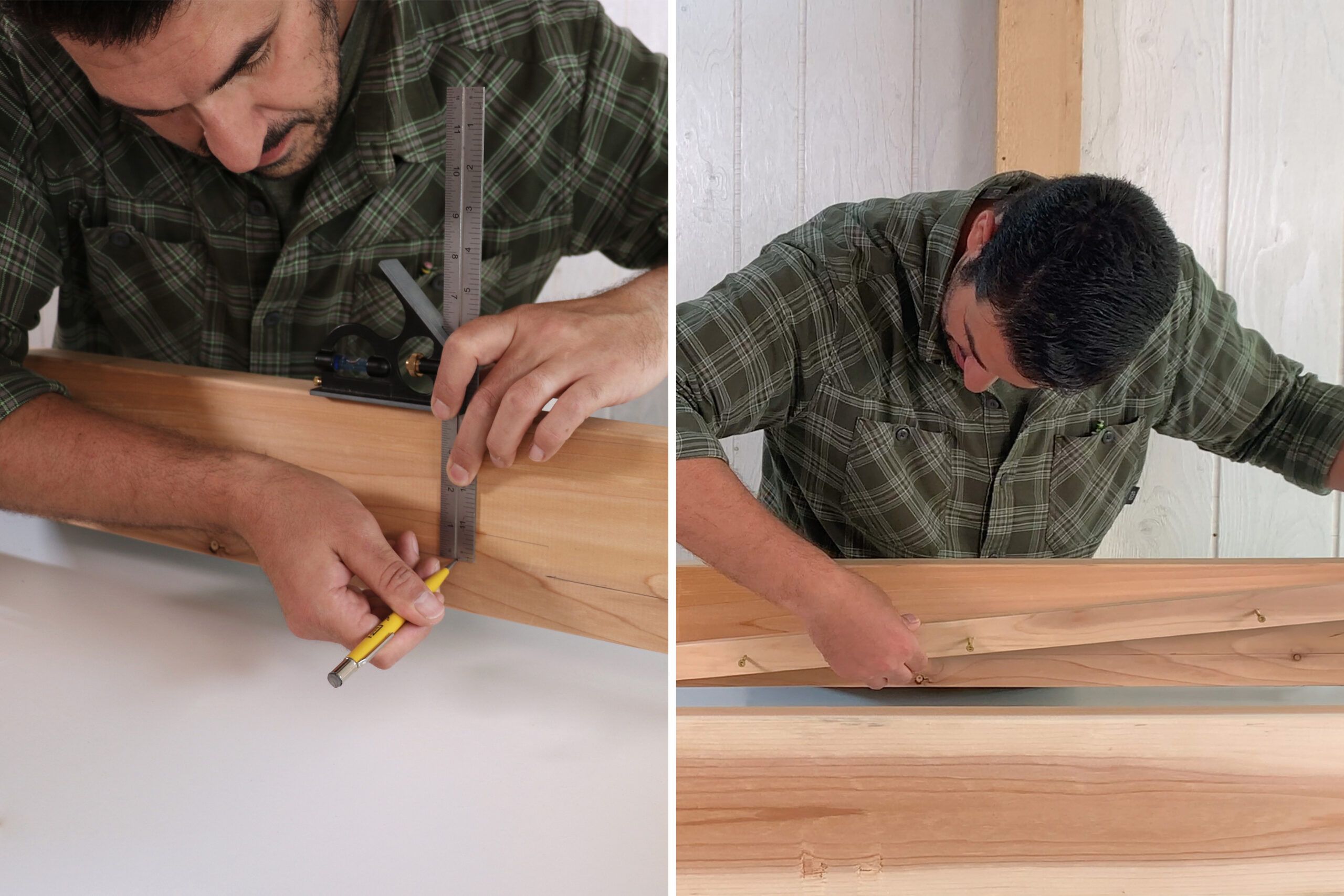
Step 3: Size Up the Cubby Wall
Remove the spacer blocks. Then:
- Stack the box’s frames again and then test the fit of the self-watering inserts by dropping them in and sliding them to one end.
- Using the scrap 2×6 cuts left over from the frame parts, stand four boards, on end, inside the planter, keeping them tight to the edge of the insert.
- Using a level, mark the tops of the 2x6s even with the top of the box. Cut the boards to length, then stand them back up inside the planter.
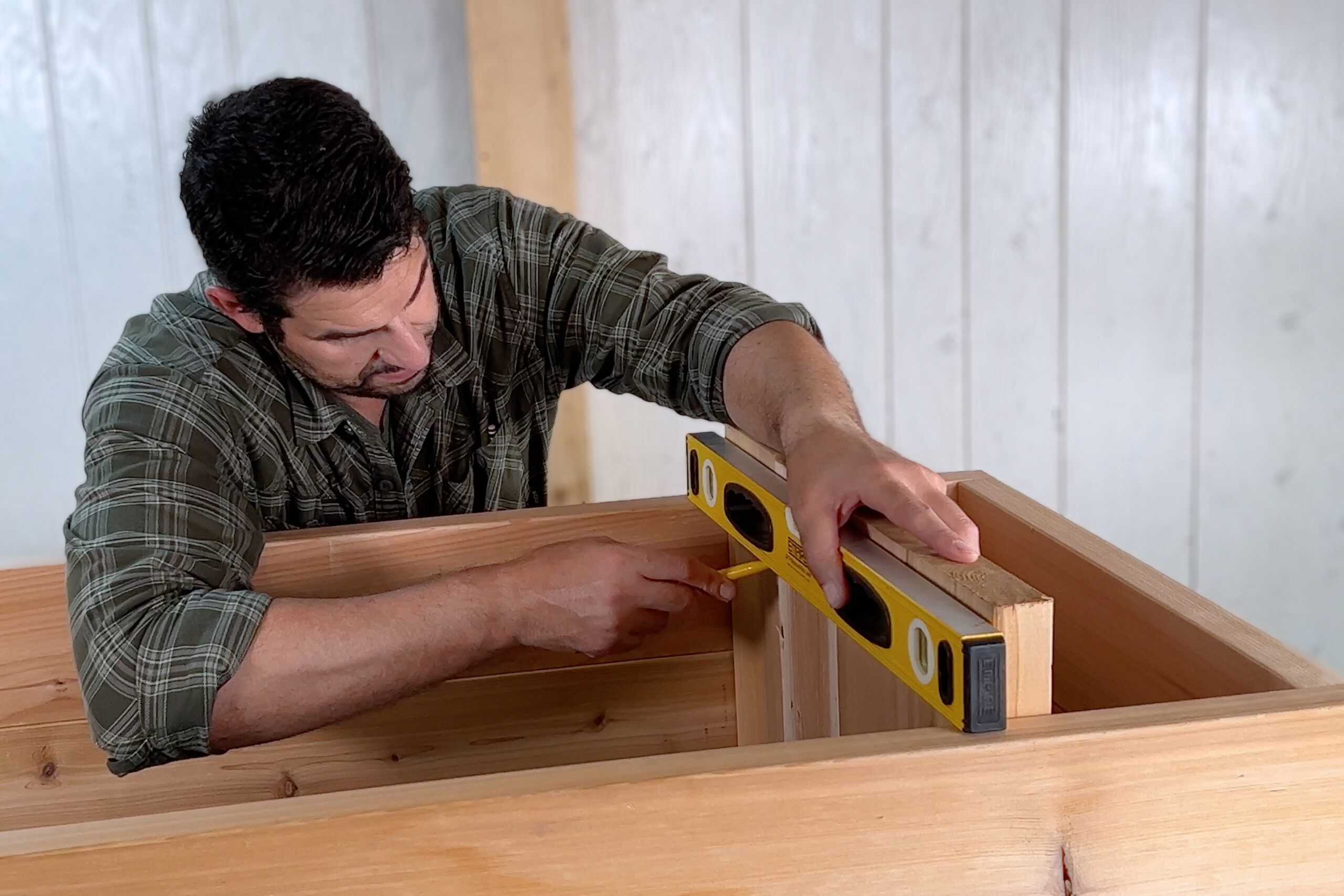
Step 4: Assemble the Wall
Here’s how to do it:
- Cut a length of 1×2 to the width of the wall to act as a brace. Hold the brace to the wall and mark the center of each 2×6. Remove the wall parts.
- Drill pilot holes through the brace at the pencil marks. With the boards on the work surface, add glue, then screw the brace to the 2x6s a few inches down from the top edge using 1 3/4-inch screws.
- Add two more 1×2 cleats, this time to the side of the wall facing into the cubby and the end of the planter just opposite the wall.
- Glue and screw these cleats flush to the bottom edge of the planter to support the cubby floor you’ll add later.
- Insert the assembled wall into the planter. Keeping the wall square to the frame, mark the center of the cubby wall onto the planter using a rafter square.
- Drill pilot holes through the outside of the planter into the edge of the wall. Then, drive 3 1/2-inch fasteners to hold the wall in place.
- Measure for the lengths of the four 2x6s for the cubby floor, then cut and drop them into place.
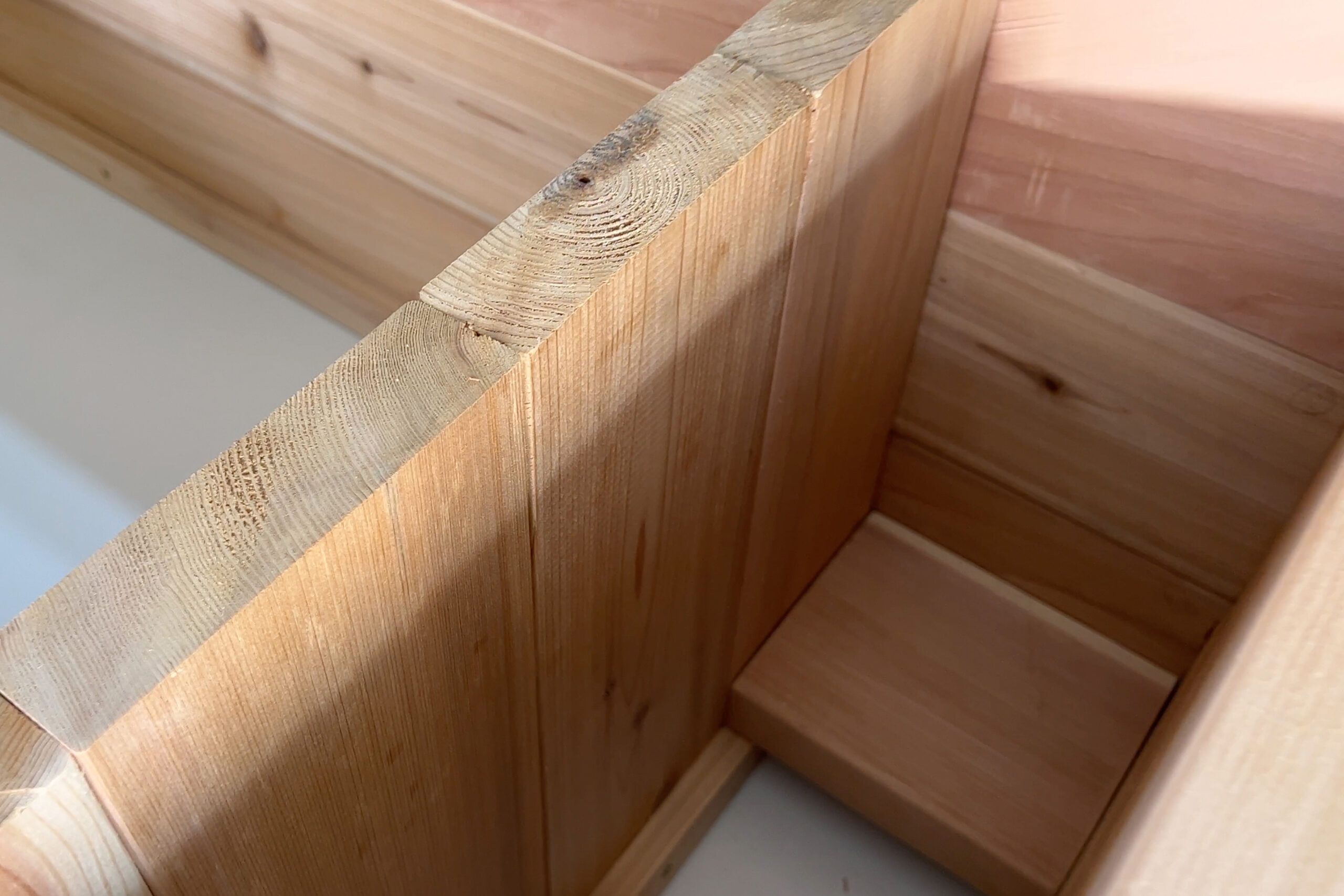
Step 5: Add Trim
Rest a strip of 1×4 on top of the planter box, making sure it’s flush with the inside edge. Mark the overall length, keeping in mind you want an even reveal of about 2 inches on all sides of the box.
Cut, glue, and install the trim using 2-inch long, stainless steel 18-gauge nails. Repeat with the other long edge. Then measure, mark, cut, and infill the two short ends, along with the top of the cubby wall.
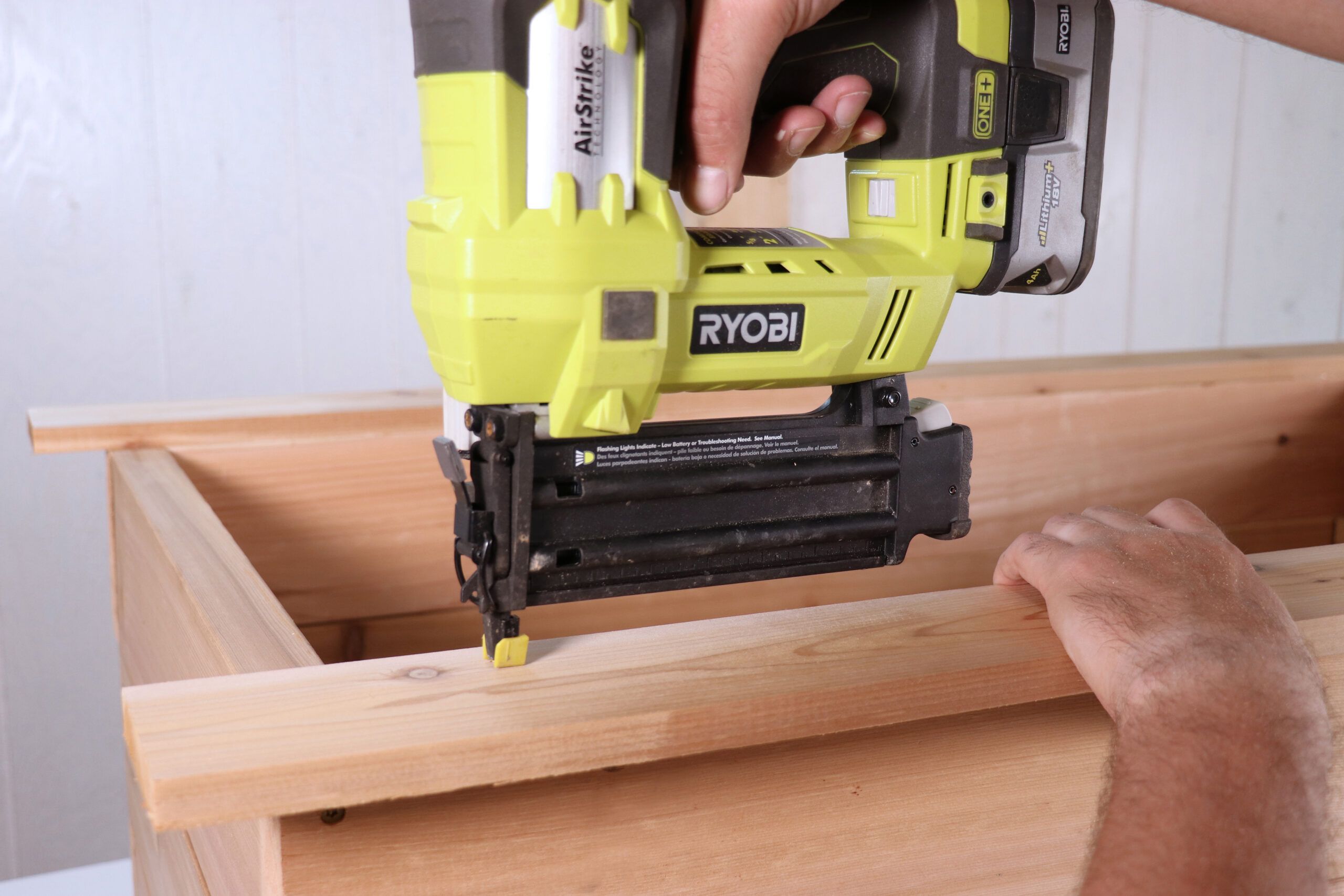
Step 6: Build the Cubby Top
Cut a piece of 1/2-inch thick plywood to fit the cubby opening, and trim three pieces of 1×4 to length for the top. Add glue to the edges to make a panel, then add glue to one face of the plywood.
Clamp the boards together and center the plywood on the top. Attach the two layers using 3/4-inch screws. Once the glue has set, flip the top over and attach the handle.
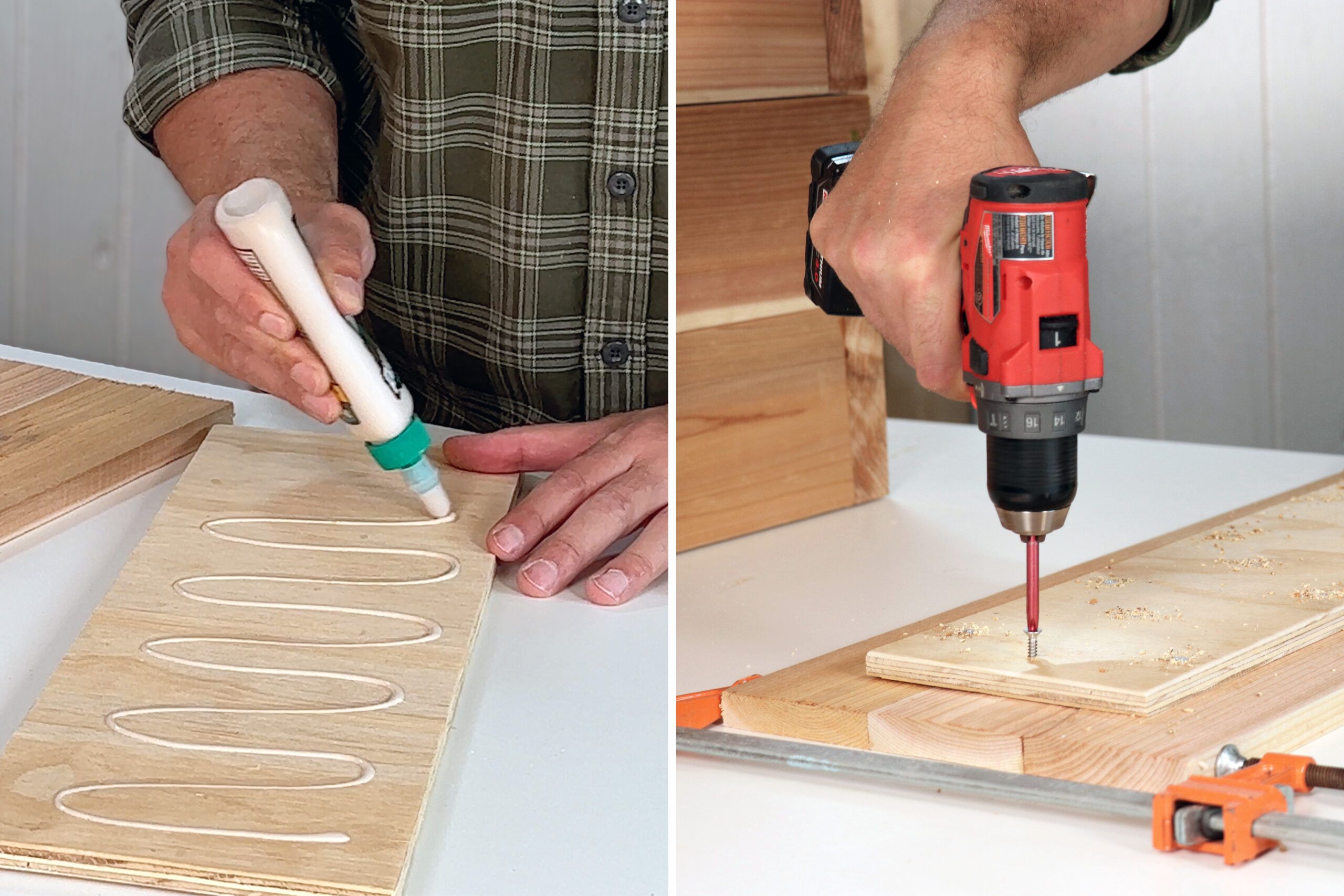
Step 7: Cut and Add the Legs
Cut the 2×6 legs to length. Spread clear epoxy on one end of each leg, which prevents the wood from wicking moisture through the end grain. You can also use the same epoxy to coat the end grain on the cubby lid. Set the legs aside to cure.
Once the epoxy dries to the touch, mark the taper. Measure up from the epoxied end of the leg to about 1 inch below the bottom of the planter box, and strike a line. Then mark a second line about 1 1/2 inches in from the side of the leg, down by the epoxyed end. Connect the two marks with a straight edge.
Use a circular saw to cut along the line. Repeat on the remaining three legs.
Then turn the planter, so the top trim is on the work surface. Position the legs at the corners, so they are tight to the underside of the trim. Clamp the leg in place, then drill pilot holes for four screws. Attach the leg with structural screws. Repeat on the remaining three legs.
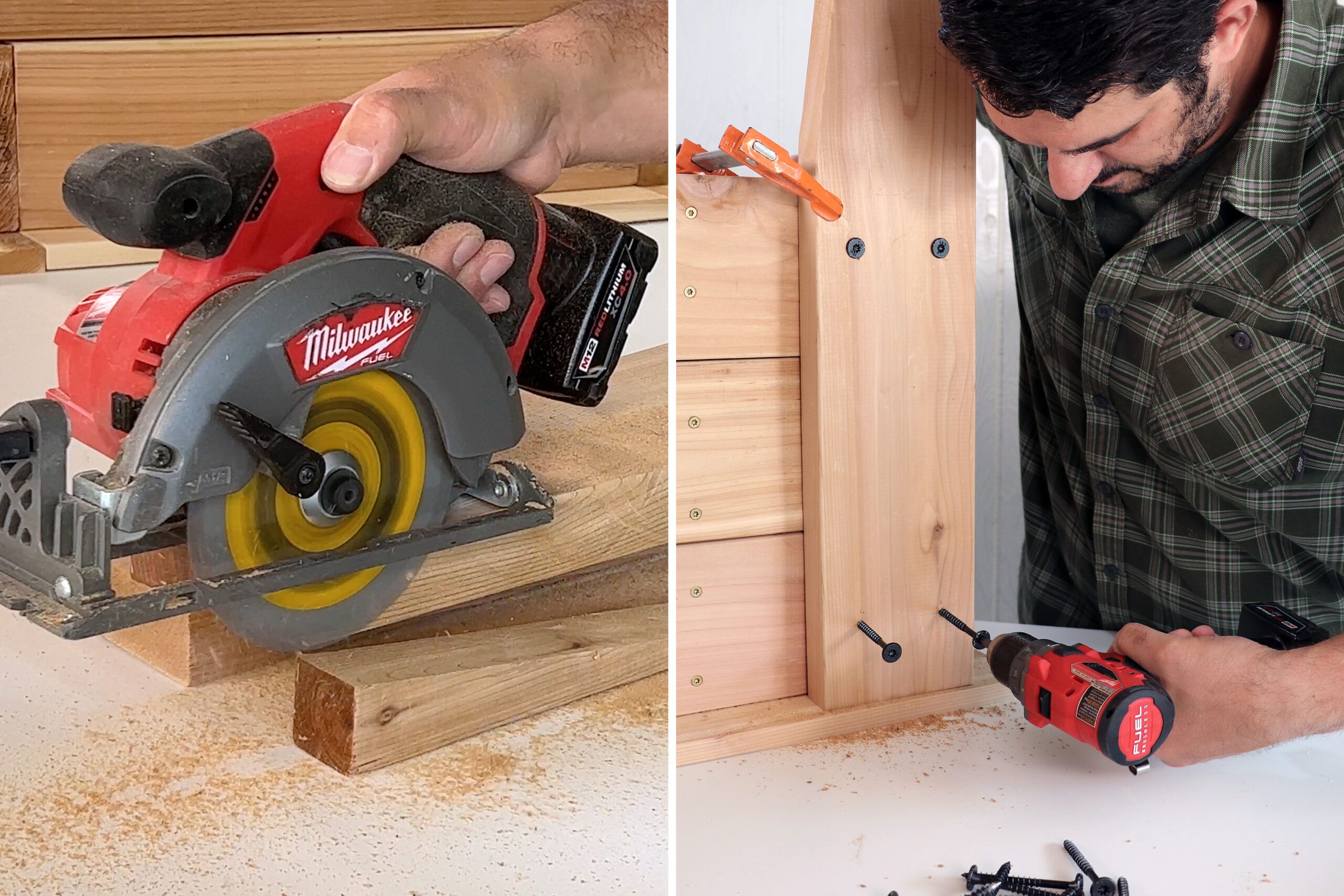
Step 8: Connect the Inserts
Turn the self-watering inserts upside down so the tops are resting on the work surface, then slide them together with the barbed ends facing each other.
Using scissors, cut the plastic tubing that comes with the inserts to length, about 1/8 inch longer than the distance between the barbed male drains. Add the supplied plugs to the open end on each insert.
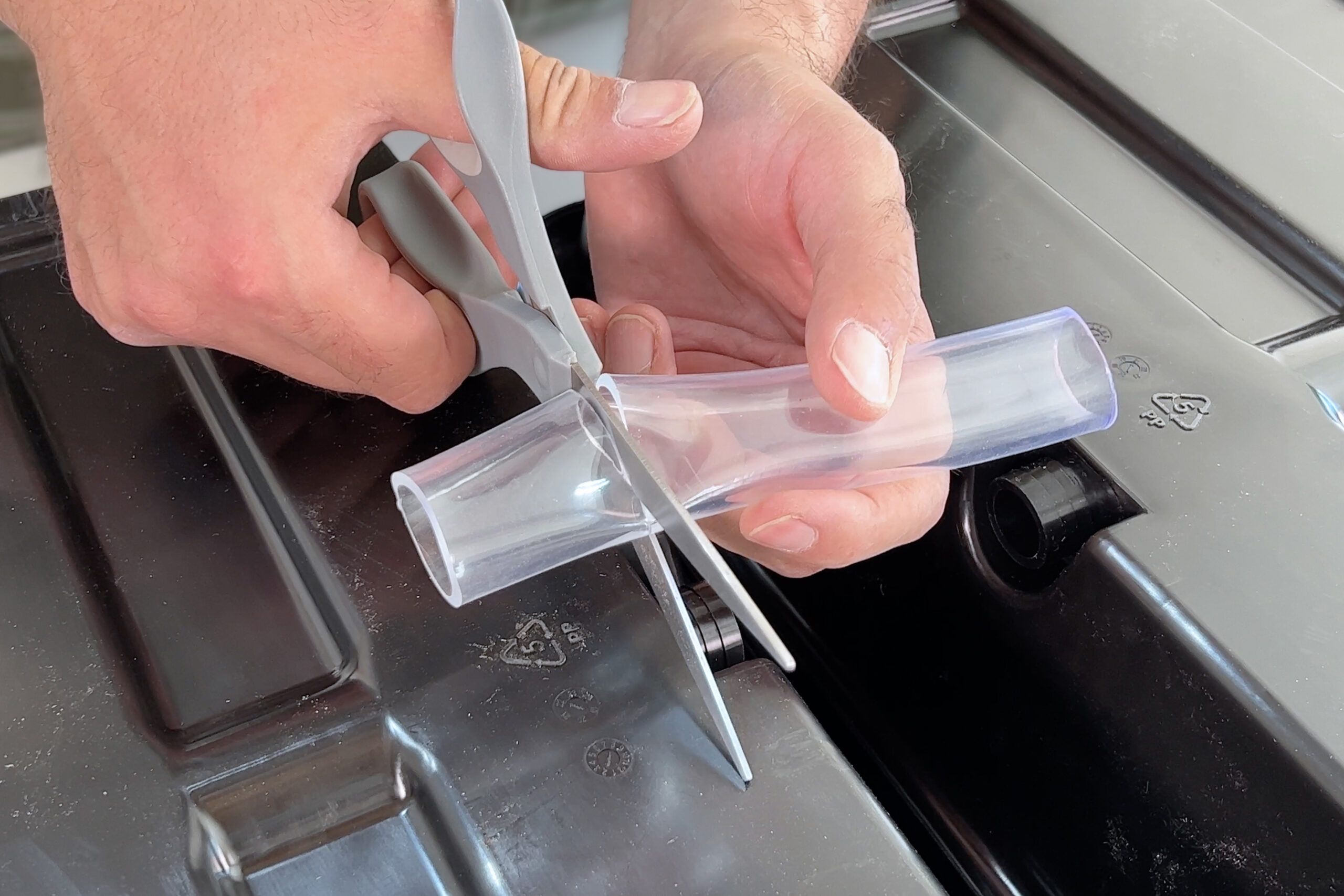
Step 9: Add the Inserts
Have a friend help you carry the planter where you’d like it to be positioned outside. Then:
- Slip the inserts into position on the cleats.
- Remove the top from each insert and pour some water from a bucket or watering can into the pans to check for leaks.
- Check the tubing and drain plugs if you notice any water dripping down.
- Each of the inserts’ tops has a location for a fill tube, though we’ll only be using one. Pay attention to the location of the circular cut-out, which determines the location of the fill tube. Position the tops back onto the inserts. Remove the fill tube’s cut-out with a utility knife.
- Slide the white fill tube indicator out of the clear plastic fill tube. Press the clear plastic fill tube into the hole. Screw it so the cap is above the level of the planter box.
- Rest the supplied cedar spacer above where the planters touch each other to prevent soil from spilling through the gaps.
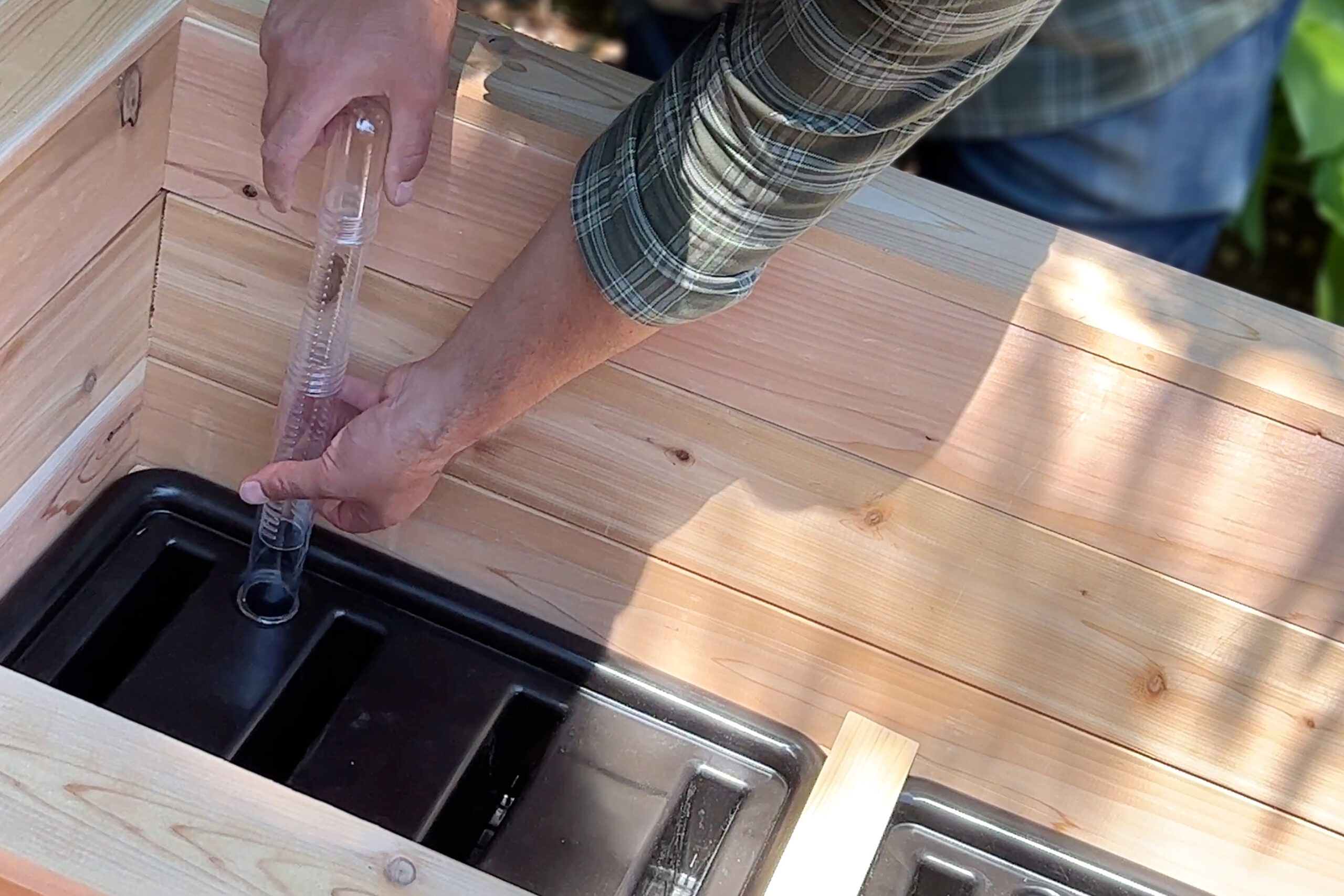
Step 10: Trim Fill Tube and Plant
Fill with soil and add plants, then twist the fill tube until its opening is just above the soil level. Be careful not to dislodge the fill tube, which would send soil into the pan below or the cedar board resting on the inserts. Remove the cap.
Insert the white fill tube indicator and press it down until you feel it hit the bottom of the pan below. Then cut the indicator even with the top of the fill tube. Replace the cap.
When the insert is full of water, the indicator tube floats up. If you notice the indicator’s level drops near the soil, you know it’s time to add water.
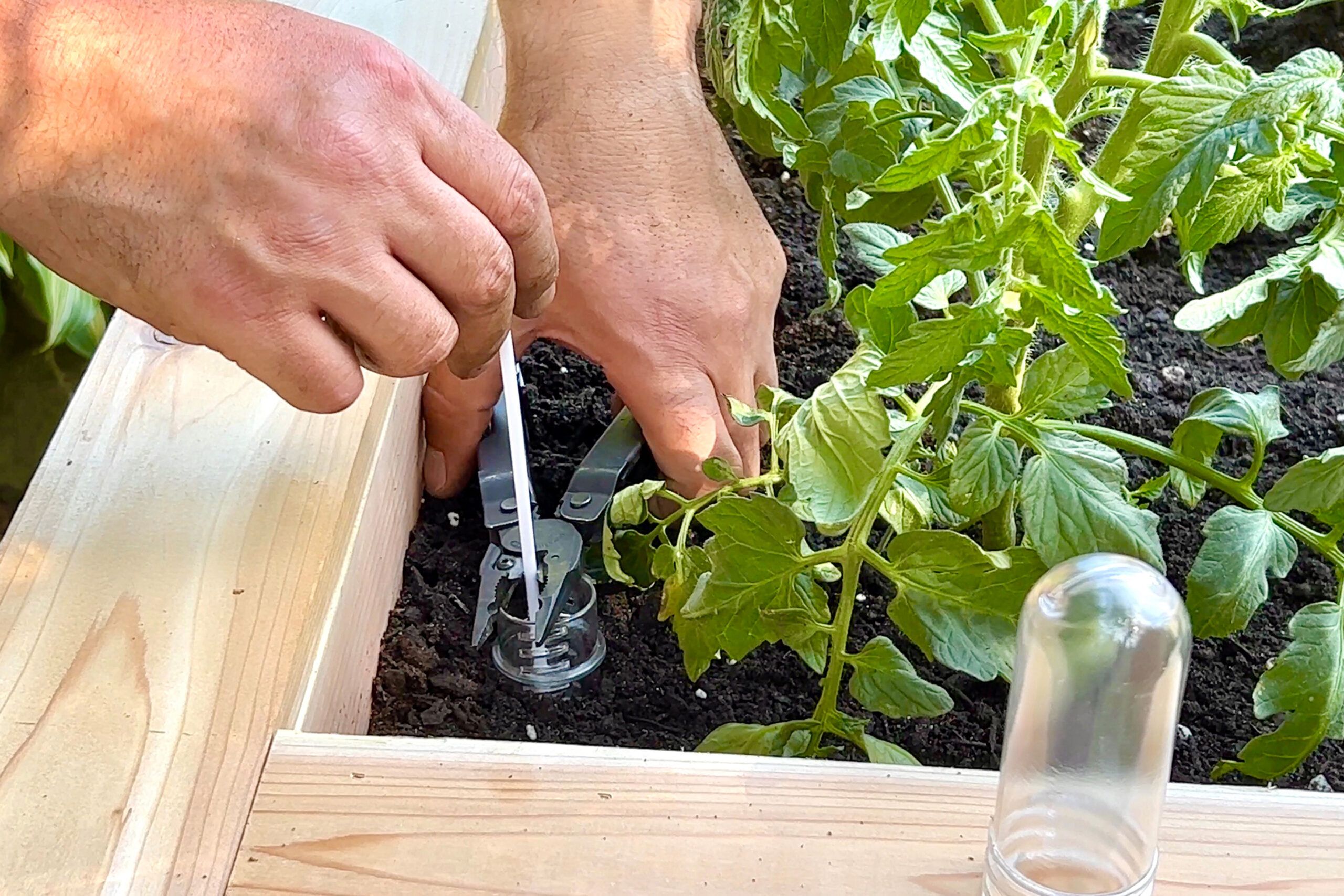
Self-Watering Planter Maintenance and Care
Regular maintenance is important to keep your self-watering planter working effectively. You should clean the fill tube and indicator regularly to prevent algae growth. Check the drain plugs for any signs of wear and replace them if necessary. In colder climates during winter months, consider emptying the water reservoir to prevent freezing and potential damage to the system. Drain excess water at the end of the season, using a flat-head screwdriver to pry out the plugs on either end of the planter.
Examine your planter’s wood regularly for signs of weather-related damage. Applying a fresh coat of food-safe oil or outdoor-rated milk paint every few years can extend your planter’s lifespan and keep it looking attractive. Additionally, make sure the soil remains loose and aerated to allow roots to access water efficiently.
Planting Suggestions
Your self-watering planter is suitable for a wide variety of plants:
- Colorful annuals for a vibrant display
- Compact vegetable varieties like cherry tomatoes or bush beans
- Herbs such as basil, parsley, and cilantro
- Leafy greens like lettuce, spinach, and kale
Remember to group plants with similar water needs together for optimal growth. Having a mix of plants in your self-watering planter can also help deter pests and encourage pollinators.
Companion planting, where plants that benefit each other are grown together, can lead to healthier plants and improved yields. For instance, growing marigolds alongside vegetables can repel certain insects, while basil can enhance the flavor of tomatoes. Strong root vegetables like carrots and beets are also good candidates for this type of planter, as the consistent moisture helps them develop evenly.
Supplies and Cut List
Below are your DIY planter project’s materials, tools, and cut list.
Materials
- Eight 2×6 cedar boards, 8 feet long
- 3 1/2-inch exterior grade screws
- Exterior-grade wood glue (or construction adhesive)
- Two 1×2 cedar boards, 8 feet long
- 1 3/4-inch exterior grade screws
- Four 1×4 cedar boards, 8 feet long
- 18-gauge stainless steel nails, 2 inches long
- 1/2-inch plywood cut from a 2×2 project panel
- 3/4-inch exterior grade screws
- Metal handle
- Clear epoxy
- 2 7/8-inch exterior grade structural screws
- Raised bed soil
- Plants
Cut list
- 2×6 cedar frame: four @ 52 inches long
- 2×6 cedar frame: four @ 22 inches long
- 2×6 cedar frame: two @ 49 inches long
- 2×6 cedar frame: two @ 25 inches long
- 2×6 cedar cubby wall: four @ 16 ½ inches
- 1×2 cedar brace: one @ 21 inches
- 1×2 cedar cleat: two @ 44 inches long
- 1×2 cedar cleat: two @ 20 ½ inches long
- 1×2 cedar cleat for cubby: two @ 22 inches long
- 1×4 cedar trim: two @ 59 inches long
- 1×4 cedar trim: two @ 22 inches long
- 1/2-inch plywood: one @ 6 ½ x 22 inches
- 1×4 cedar boards for cubby top: three @ 25 ¾ inches long
- 2×6 cedar legs: four @ 29 inches long
